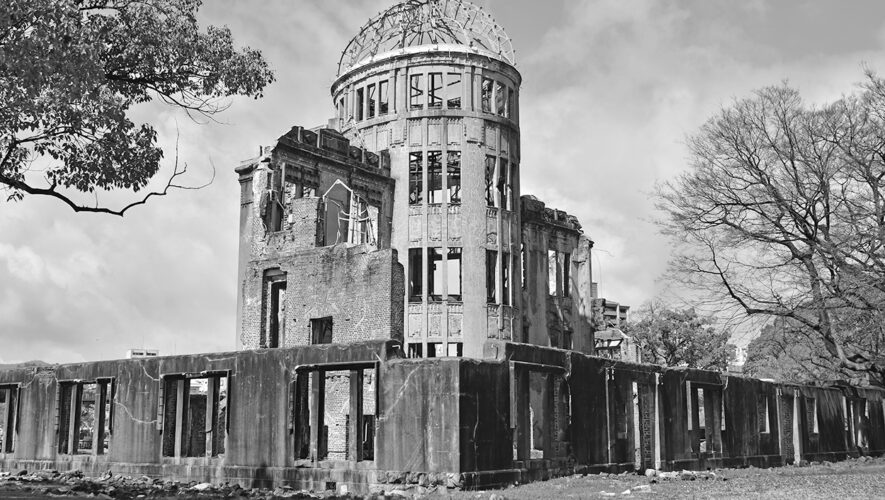Neville Shute’s 1957 novel, “On the Beach,” is about how people in Australia wait and prepare for deadly radioactive fallout, swirling around the world after a nuclear war, to finally reach their distant shores.
I read that in middle school while the Cold War was still raging. It added to my apprehension about how a faraway war could have deadly consequences for those who were far from its path.
In 2017, my wife and I went to Hiroshima while visiting our daughter, Kelsey, who lives in Japan. We were traveling to a few cities with her — Nagoya, Kyoto and Tokyo. We wanted to go to Miyajima, an island in Hiroshima Bay that has temples, wandering deer and is perhaps best known for its Grand Torii Gate, the massive orange structure in the water leading to the Itsukushima Shrine.
I also wanted to go to the Hiroshima Peace Memorial Museum and see the Gembaku Dome, the ruins of the one building that remained standing after the B-29 Superfortress Enola Gay dropped the atomic bomb on the city Aug. 6, 1945, to end World War II. (Followed by another atomic bomb three days later over Nagasaki.)
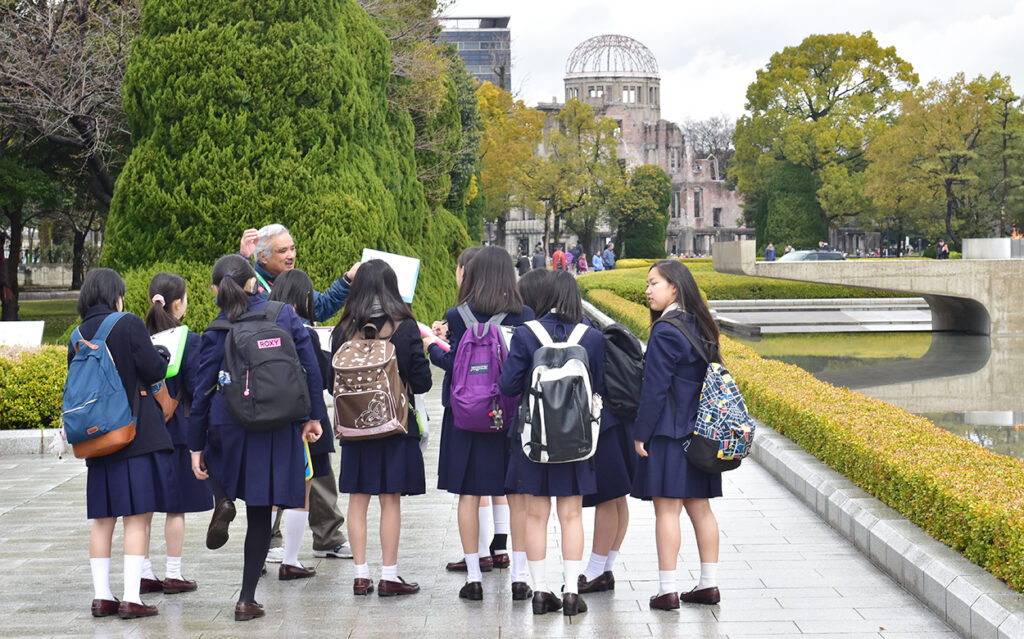
The structure was an eerie site even on the beautiful sunny day we visited. The ruins of the large stone building is capped by a skeletal metal dome. If you stand in the right place, you can block out all of the modern buildings behind it. Hiroshima has been rebuilt and is a beautiful city, easy to navigate. A glance to the side of the building reveals a beautiful river walk. But just looking at the building itself is a stark reminder of the devastation.
Nearby is the Hiroshima Peace Memorial Museum, which has poignant and disturbing displays about the destruction and death caused by the atomic bomb. One display is about Sadako Sasaki, the little girl who was 2 years old and about a mile and a half from ground zero when Hiroshima was bombed. She looked fine after the bombing, but was diagnosed with leukemia years later.
She is well known worldwide for the historical novel “Sadako and the Thousand Paper Cranes,” which my children read as part of their classroom assignments.
Sadako learned of the legend that if she made a thousand origami cranes, her wish — to be cured and survive — would be granted. In real life (not the novel), she folded 1,300 paper cranes, but her wish did not come true. She died at age 12.
Some of her origami cranes are part of the exhibit.
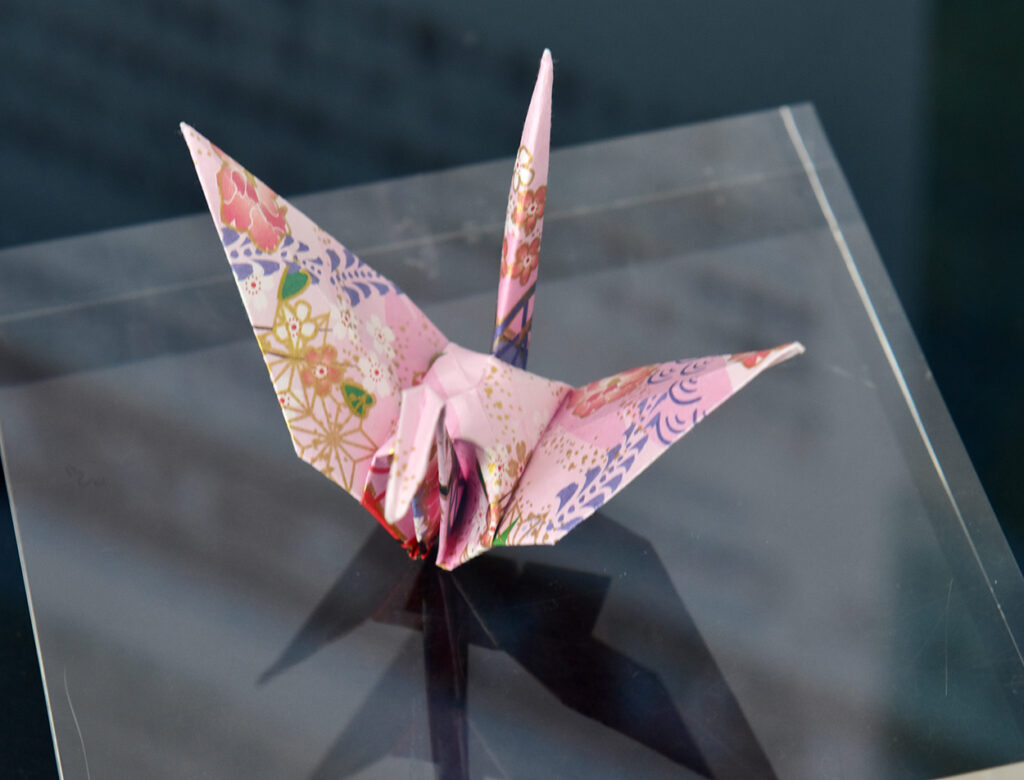
For me, seeing the cranes made by her small hands was heart-wrenching, but what impacted me more was something in the Peace Park outside the museum. In a small building the size of a bus stop were thousands upon thousands of paper cranes made by contemporary school children — many were on long strings, others were formed into posters with designs including hearts, “peace” and rainbows. They were within sight of a statue of Sadako holding a giant paper crane above her head. A plaque on the statue reads, “This is our cry. This is our prayer. Peace in the world.”
I have read many accounts of why the United States dropped the nuclear bombs on Hiroshima and Nagasaki. The argument is that using those terrible weapons, though devastating, would actually save more lives, both American and Japanese. They based that on the belief — after the ferocious fighting by the Japanese defenders on islands, including Okinawa — that many more soldiers and civilians would be killed if the allies had to invade mainland Japan. Although why they chose those two cities with mainly civilian population centers is not as well justified.
In terms of sheer number of deaths, it is almost certainly true that more would have died in an invasion, but why is it that civilian populations bear the brunt of trauma in war?
What made Hiroshima and Nagasaki special in the worst way possible is that they ushered in the nuclear age. It is not just conventional attacks the world fears, but the threat of weapons able to obliterate the human race at the push of a few buttons.
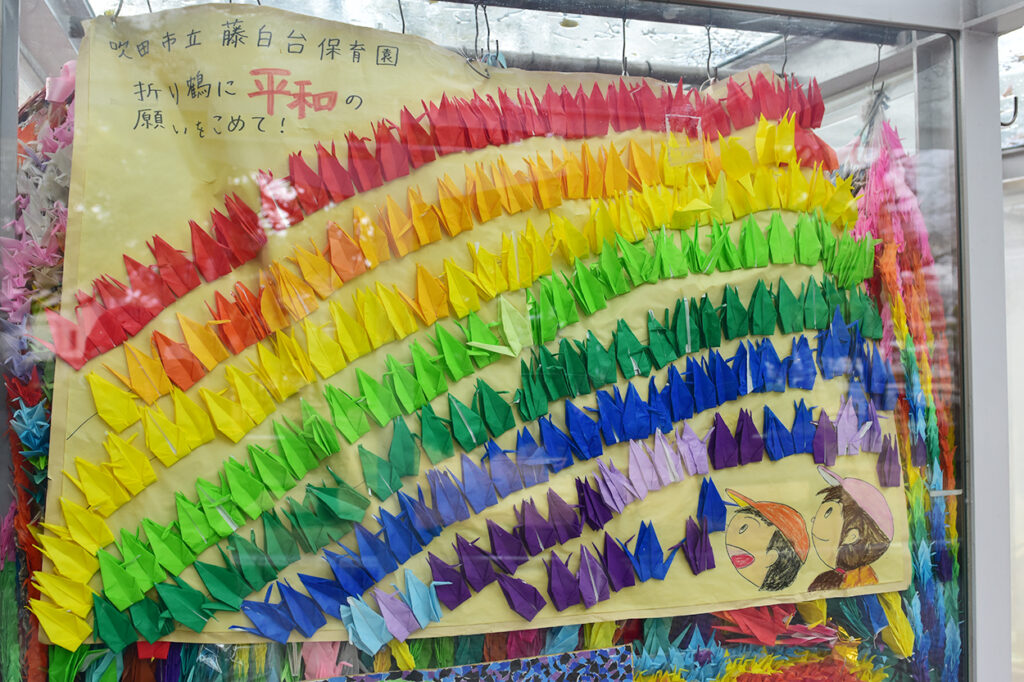
In this edition are stories I wrote about Japanese director Hideaki Ito and his film, “Silent Fallout: Baby Teeth Speak,” about how radioactive fallout from nuclear testing spread across the United States and affected the unsuspecting population.
He makes the point that Hiroshima and Nagasaki were not the only places bombed. With more than 2,000 nuclear weapons tests around the world, more than 500 of them above ground prior to the 1963 nuclear test ban treaty, the weapons made to (theoretically) keep people safe have been harming them for decades because of radioactive fallout.
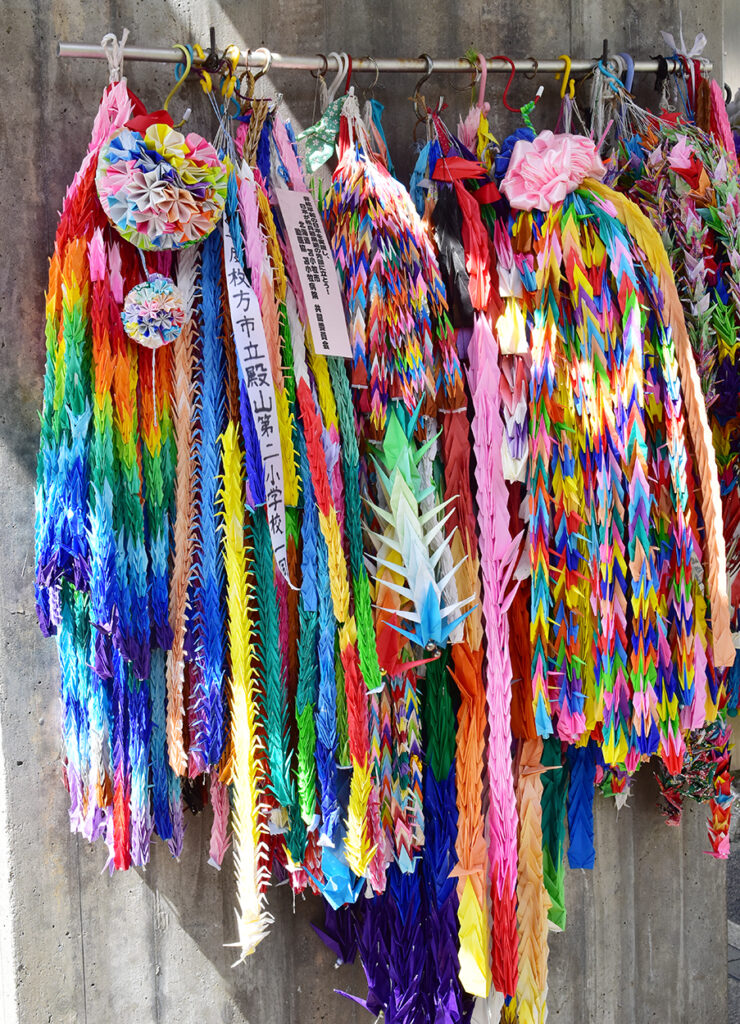
It brought to mind my mother’s worries about drinking milk when my siblings and I were children in the 1960s. By the time I read “On the Beach,” radioactive materials had already spread across most of the United States because of the nuclear bomb tests. Fortunately for most of us, it wasn’t deadly. That wasn’t the case for everyone.
David Nahan is editor and publisher of the Ocean City Sentinel, Upper Township Sentinel and The Sentinel of Somers Point, Linwood and Northfield. He took these photos of the Gembaku Dome and Hiroshima Peace Park Memorial and museum during a visit to Hiroshima in 2017.


